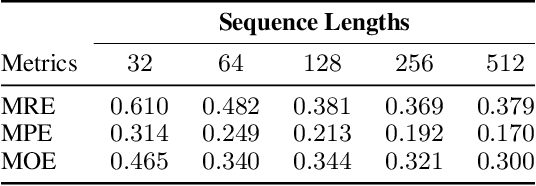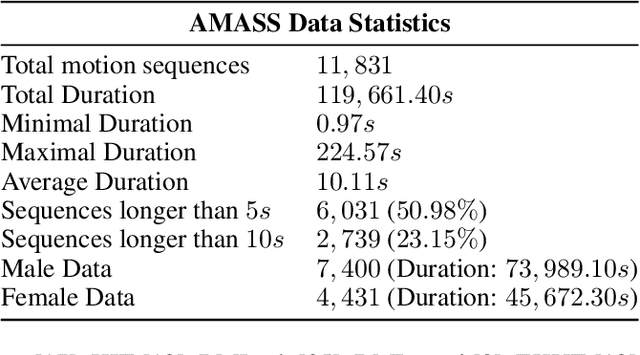Chengan He
3DGH: 3D Head Generation with Composable Hair and Face
Jun 25, 2025Abstract:We present 3DGH, an unconditional generative model for 3D human heads with composable hair and face components. Unlike previous work that entangles the modeling of hair and face, we propose to separate them using a novel data representation with template-based 3D Gaussian Splatting, in which deformable hair geometry is introduced to capture the geometric variations across different hairstyles. Based on this data representation, we design a 3D GAN-based architecture with dual generators and employ a cross-attention mechanism to model the inherent correlation between hair and face. The model is trained on synthetic renderings using carefully designed objectives to stabilize training and facilitate hair-face separation. We conduct extensive experiments to validate the design choice of 3DGH, and evaluate it both qualitatively and quantitatively by comparing with several state-of-the-art 3D GAN methods, demonstrating its effectiveness in unconditional full-head image synthesis and composable 3D hairstyle editing. More details will be available on our project page: https://c-he.github.io/projects/3dgh/.
Perm: A Parametric Representation for Multi-Style 3D Hair Modeling
Jul 31, 2024Abstract:We present Perm, a learned parametric model of human 3D hair designed to facilitate various hair-related applications. Unlike previous work that jointly models the global hair shape and local strand details, we propose to disentangle them using a PCA-based strand representation in the frequency domain, thereby allowing more precise editing and output control. Specifically, we leverage our strand representation to fit and decompose hair geometry textures into low- to high-frequency hair structures. These decomposed textures are later parameterized with different generative models, emulating common stages in the hair modeling process. We conduct extensive experiments to validate the architecture design of \textsc{Perm}, and finally deploy the trained model as a generic prior to solve task-agnostic problems, further showcasing its flexibility and superiority in tasks such as 3D hair parameterization, hairstyle interpolation, single-view hair reconstruction, and hair-conditioned image generation. Our code and data will be available at: https://github.com/c-he/perm.
\textsc{Perm}: A Parametric Representation for Multi-Style 3D Hair Modeling
Jul 28, 2024Abstract:We present \textsc{Perm}, a learned parametric model of human 3D hair designed to facilitate various hair-related applications. Unlike previous work that jointly models the global hair shape and local strand details, we propose to disentangle them using a PCA-based strand representation in the frequency domain, thereby allowing more precise editing and output control. Specifically, we leverage our strand representation to fit and decompose hair geometry textures into low- to high-frequency hair structures. These decomposed textures are later parameterized with different generative models, emulating common stages in the hair modeling process. We conduct extensive experiments to validate the architecture design of \textsc{Perm}, and finally deploy the trained model as a generic prior to solve task-agnostic problems, further showcasing its flexibility and superiority in tasks such as 3D hair parameterization, hairstyle interpolation, single-view hair reconstruction, and hair-conditioned image generation. Our code and data will be available at: \url{https://github.com/c-he/perm}.
NeMF: Neural Motion Fields for Kinematic Animation
Jun 04, 2022



Abstract:We present an implicit neural representation to learn the spatio-temporal space of kinematic motions. Unlike previous work that represents motion as discrete sequential samples, we propose to express the vast motion space as a continuous function over time, hence the name Neural Motion Fields (NeMF). Specifically, we use a neural network to learn this function for miscellaneous sets of motions, which is designed to be a generative model conditioned on a temporal coordinate $t$ and a random vector $z$ for controlling the style. The model is then trained as a Variational Autoencoder (VAE) with motion encoders to sample the latent space. We train our model with diverse human motion dataset and quadruped dataset to prove its versatility, and finally deploy it as a generic motion prior to solve task-agnostic problems and show its superiority in different motion generation and editing applications, such as motion interpolation, in-betweening, and re-navigating.
 Add to Chrome
Add to Chrome Add to Firefox
Add to Firefox Add to Edge
Add to Edge